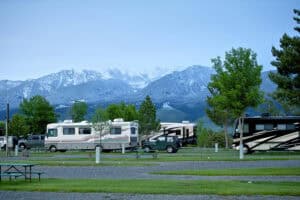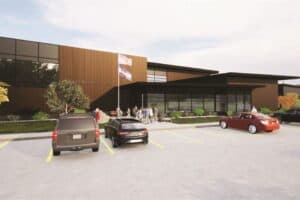With Tutt Boulevard now providing convenient access to Powers Boulevard from Constitution Avenue to Woodmen Road, who or what in Colorado Springs history was the source for the name of this street?The answers were in a book by Denver resident Robert C. Olson, entitled “Speck, the Life and Times of Spencer Penrose,” published in 2008. Additional information is from the “History of Colorado,” edited by Wilbur Fiske Stone and published in 1918.The name “Tutt” surfaces in Colorado Springs history with the arrival of Charles Leaming Tutt in 1884.Born in Philadelphia, Pa., in 1864, the Tutt family’s roots stretch back to England, where one ancestor was once mayor of London and another was a member of Gen. George Washington’s staff during the Revolutionary War.As a child, Tutt attended the Protestant Episcopal Academy, where he met Spencer “Speck” Penrose, who would later become Colorado’s best-known mining mogul.The two boys shared another trait: Both of their fathers were physicians.While Penrose went on to attend Harvard University, the death of Tutt’s father forced Tutt to quit school at an early age. He went to work as a clerk for the Pennsylvania Railroad.Eventually, Tutt landed in North Platte, Neb., where he lost $500 in a business venture, and then moved on to Black Forest, where he bought a cattle ranch.According to Stone, in 1887, Tutt sold two cows to earn the fare to return to Philadelphia, where he married Josephine Thayer, daughter of Martin Russell Thayer, a jurist who had served in President Abraham Lincoln’s administration.A year after moving to the Black Forest ranch, Josephine convinced Tutt to sell out and move to Colorado Springs to start a real estate and insurance business.The Tutts lived at 611 North Weber Street, which, at the time, was a new two-story gingerbread house with a combination barn and buggy shed in the rearTutt’s one-room business office was at 14 East Pikes Peak Ave.Stone wrote that not long after opening a branch office in Pueblo, Colo., in 1889, Tutt visited Cripple Creek, walked up “Poverty Gulch” and met a prospector who offered to help Tutt stake out a mining claim in return for half interest in the mine.Once the claim was staked, the prospector sold his half interest to Tutt for $50. Tutt was now the owner of the “Cash on Delivery” mine but had no money to develop it.In 1892, geologist Richard Penrose, Spencer Penrose’s brother, traveled through Colorado Springs, met with Tutt and asked him to write to Spencer and encourage him to relocate to Colorado Springs for its business opportunities.By then, Spencer Penrose was the Penrose family’s black sheep. He had disregarded his father’s advice to enter the medical profession and had graduated from Harvard near the bottom of his class, with a degree in engineering.Since graduating, Penrose had mined for gold in Mexico and partnered in a wholesale and retail business selling fruits, vegetables, hay, grain, coal, lime and agricultural implements in Las Cruces, N.M.Penrose then disposed of the agricultural business to partner in a cement business in Dallas, Texas, which he dropped in favor of a land deal in Utah that soon fell through.So, when Tutt wrote that letter in 1892 extolling the virtues of Colorado Springs, Penrose was more than ready to come, in spite of the fact that the two had not seen each other for at least 10 years.Penrose arrived in Colorado Springs by train Dec. 10, 1892.Two days later, Tutt offered Penrose half interest in his real estate business for $500, as well as 1/16th interest in the “Cash on Delivery” mine in return for raising $10,000 to pay miners and buy equipment.Unfortunately, Penrose was broke, with just $100 dollars to his name. He tried to get another brother, Boies Penrose, then a senator in the Pennsylvania State Legislature, to loan the money, but Boies refused. Instead, Boies sent $150 so Penrose could buy a train ticket back to Philadelphia.Penrose gave the $150 to Tutt and asked if he could work off the balance from his earnings in the real estate business. Tutt agreed, and a business empire was born.Eventually, Penrose and Tutt would develop and sell the “Cash on Delivery” mine for $300,000, build a gold processing monopoly in Colorado City, partner in the Colorado Title & Trust Co., build the Cripple Creek Short Line railroad and partner in what would become Utah’s Kennecott Copper Mine – the largest copper mine in the world.Tutt grew more interested in the potential for mining in Oregon and sold his shares in the copper mine to Penrose for what he had paid for them.Tutt died at the age of 45 on Jan. 21, 1909, in a New York hotel. Of Tutt, Stone said, “His many likable qualities endeared him to all with whom he came in contact and made him a citizen of whom any community might well be proud.”Penrose would go on to amass a multimillion dollar fortune, including assets like the Broadmoor Hotel.In 1937, two years before his death, Penrose and his wife, Julie, formed the El Pomar Foundation to manage the Penrose fortune to “enhance, encourage and promote the current and future well being of the people of Colorado through grant making and community stewardship” according to the foundation’s Web site at www.elpomar.org.When Penrose died in 1939, Tutt’s son, C. L. Tutt Jr. became president of the Broadmoor Hotel and one of four trustees of the El Pomar Foundation.The Tutt-Penrose connection endures. Tutt’s great grandson, R. Thayer Tutt Jr., is an El Pomar Foundation trustee, serving as chief investment officer, said Lisa Carlon, spokeswoman for the foundation’s investment office.







